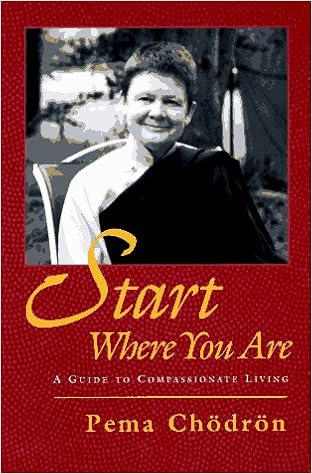
Living Beautifully: with Uncertainty and Change
Description
Pema Chödrön is an American Buddhist nun in the lineage of Chögyam Trungpa and resident teacher at Gampo Abbey in Cape Breton, Nova Scotia, the first Tibetan Buddhist monastery in North America. She is the author of numerous best-selling books, including When Things Fall Apart , Start Where You Are , and The Wisdom of No Escape . Excerpt. © Reprinted by permission. All rights reserved. "The Three Commitments are three levels of working with groundlessness. Underlying them all is the basic instruction to make friends with yourself—to be honest with yourself and kind. This begins with the willingness to stay present whenever you experience uneasiness. As these feelings arise, rather than running away, you lean into them. Instead of trying to get rid of thoughts and feelings, you become curious about them. As you become accustomed to experiencing sensation free of interpretation, you will come to understand that contacting the fundamental ambiguity of being human provides a precious opportunity—the opportunity to be with life just as it is, the opportunity to experience the freedom of life without a story line."—from Living Beautifully
Features & Highlights
- The best-selling author and spiritual teacher shares practices for living with wisdom and integrity even in confusing and uncertain situations.
- Is it possible to live well when the very ground we stand on is shaky? Yes, says everyone's favorite Buddhist nun, it's even possible to live beautifully, compassionately, and happily on shaky ground—and the secret is: the ground is always shaky. Pema shows how using a traditional Buddhist practice called the Three Vows or Three Commitments, offering us a way to relax into profound sanity in the midst of whatever non-sanity is happening around us. Just making these simple aspirations can change the way we look at the world and can provide us with a lifetime of material for spiritual practice.The Three Commitments are three methods for embracing the chaotic, uncertain, dynamic, challenging nature of our situation as a path to awakening. The first of the commitments, traditionally called the Pratimoksha Vow, is the foundation for personal liberation. This is a commitment to doing our best to not cause harm with our actions or words or thoughts, a commitment to being good to each other. It provides a structure within which we learn to work with our thoughts and emotions, and to refrain from speaking or acting out of confusion. The next step toward being comfortable with groundlessness is a commitment to helping others, traditionally called the Bodhisattva Vow. It is a commitment to dedicate our lives to keeping our hearts and minds open, and nurturing our compassion with the longing to ease the suffering of the world. The last of the three commitments, traditionally known as the Samaya Vow, is a resolve to embrace the world just as it is, without bias; a resolve to see everything we encounter, good and bad, pleasant and painful, as a manifestation of awakened energy. It is a commitment to see everything and anything as a means by which we can awaken further.





